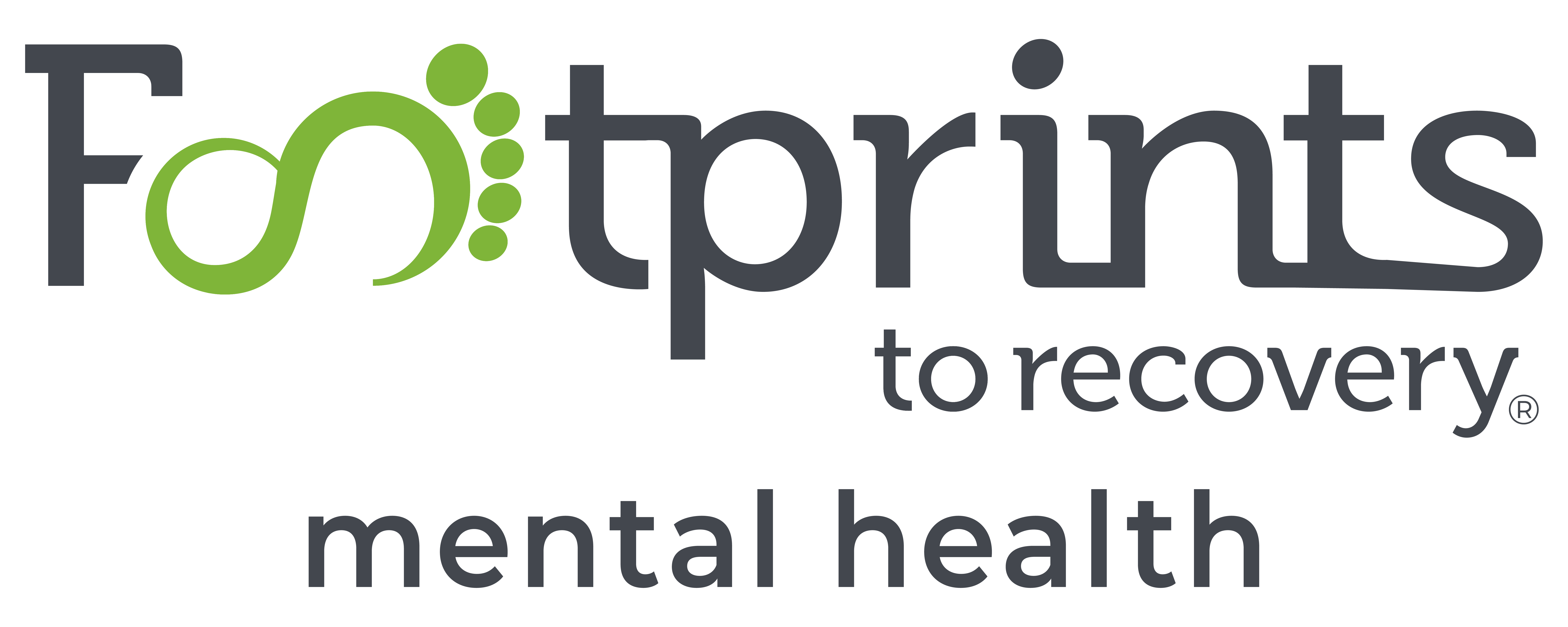Footprints to Recovery, Mental Health Treatment Program in NJ
Explore Our Treatment Programs
Eye Movement Desensitization and Reprocessing (EMDR)
During mental health treatment in Colorado, Illinois, and New Jersey, our licensed and certified clinicians provide eye movement desensitization and reprocessing therapy to help clients process traumatic memories and alleviate symptoms of PTSD.

Psychotherapy is at the forefront of mental health treatment and there are many different evidence-based therapies used to treat symptoms of mental health disorders. One of the most effective when it comes to trauma is eye movement desensitization and reprocessing (EMDR). The technique was created by Doctor Francine Shapiro in 1987 when she noticed her eye movements seemed to decrease her own negative emotion and memories.
This technique is used by the team at Footprints to Recovery Mental Health for trauma-related disorders like PTSD. Our mental health treatment facility offers EMDR and more from our professional clinical team. Don’t trust your recovery to just any treatment center. Let Footprints to Recovery guide you to a brighter future.
GET HELP FOR YOUR MENTAL HEALTH
Our team of licensed mental health professionals can help you manage your symptoms and create a new, more fulfilling life.
CHECK YOUR COVERAGE ONLINE
If you have coverage of any kind, we will work with you to determine your benefits for mental health treatment. Any information you share with us is kept strictly confidential.
What Is EMDR Therapy?
EMDR stands for eye movement desensitization and reprocessing therapy. It is an evidence-based type of psychotherapy developed in the late 1980s by psychologist Francine Shapiro. It was designed to help individuals process and cope with traumatic experiences. EMDR has gained popularity as an effective treatment for various mental health conditions including post-traumatic stress disorder (PTSD).
The basic premise of EMDR therapy is that traumatic experiences can become stuck in the brain’s processing system. This causes emotional distress and negative beliefs about oneself. This can manifest in symptoms such as flashbacks, nightmares, anxiety, and avoidance behaviors. EMDR aims to help you reprocess these distressing memories, enabling them to integrate the experiences into a more adaptive and healthier perspective.
Dr. Shapiro found that the brain stores traumatic memories differently than normal, everyday memories. This makes healing from the trauma more difficult. Unresolved trauma is your brain sending messages that it’s still in danger even though the trauma has passed. EMDR allows you to access traumatic memories and begin healing.
What Does EMDR Therapy Treat?
EMDR therapy is primarily used to treat trauma-related disorders, particularly post-traumatic stress disorder. It has been extensively researched and shown to be effective in helping individuals process and cope with the effects of traumatic experiences. Trauma can result from various sources, such as:
- Single-Incident Trauma
Single-incident trauma includes life-threatening experiences such as accidents, natural disasters, assaults, or witnessing a violent event.
- Complex Trauma
Complex trauma involves prolonged and repeated traumatic experiences, often associated with childhood abuse, neglect, or ongoing interpersonal violence.
EMDR is recognized as one of the recommended treatments for PTSD by several national and international organizations, such as the World Health Organization (WHO) and the American Psychological Association (APA).
Aside from PTSD and trauma-related issues, EMDR therapy has been used to address a range of mental health conditions, including:
Single-incident trauma includes life-threatening experiences such as accidents, natural disasters, assaults, or witnessing a violent event.
- Grief and Loss
EMDR can assist in processing the emotions and distress associated with the death of a loved one or other significant losses.
For those with generalized anxiety, EMDR can assist in targeting distressing emotions, thoughts, and memories.
EMDR is effective in addressing performance-related fears and anxieties in athletes, musicians, and public speakers.
EMDR can help address specific phobias by processing the underlying traumatic experiences that contribute to the fear response.
Eye movement desensitization and reprocessing therapy can assist in addressing panic attacks and other symptoms of panic disorder.
In some cases, EMDR may be incorporated into addiction treatment to address underlying traumas that contribute to substance abuse.
EMDR Therapy for PTSD
EMDR has shown incredible promise in treating post-traumatic stress disorder. PTSD stands for Post-Traumatic Stress Disorder. It is a mental health condition that can develop in individuals who have experienced or witnessed a traumatic event. These events can be life-threatening, violent, or involve serious injury or harm. Many associate PTSD with military service, but there are many situations in life that can cause PTSD.
EMDR aims to help you process traumatic memories and experiences that are at the core of your PTSD symptoms. During the therapy, you are asked to recall the distressing memory while your therapist facilitates bilateral stimulation, which can involve side-to-side eye movements, tapping, or auditory tones. The bilateral stimulation helps the brain reprocess the traumatic memory. This means reducing the emotional charge and allowing you to form more adaptive beliefs about the event.
Through the EMDR process, the emotional distress associated with the traumatic memory is gradually reduced. This means that the memory becomes less emotionally triggering, making it easier for you to think about the event without becoming overwhelmed by fear.
Traumatic experiences can lead to the development of negative beliefs about oneself, others, and the world. For example, a person who experienced a car accident might believe, “I am not safe anywhere.” In doing so, EMDR helps you identify and reprocess these negative beliefs, replacing them with more positive and adaptive ones.
Get a Confidential Assessment From
a Mental Health Specialist
What Is EMDR Therapy Like?
EMDR therapy is a structured process involving multiple treatment sessions. During each session, the therapist will guide you through each step of EMDR therapy to ensure progress in alleviating emotional distress. Your therapist may also suggest home-based self-care practices such as mindfulness meditation and journaling to supplement your sessions.
According to the American Psychological Association (APA), there are eight phases of EMDR. As you process through EMDR sessions, your therapist will guide you through each of the eight phases of treatment. It is important to note that it can take several EMDR therapy sessions to reach the next phase of treatment. With consistency and dedication, EMDR therapy can provide relief from traumatic memories and help you lead a healthier life.
History-Taking and Treatment Planning
As you begin treatment, your EMDR-certified therapist will start by taking a comprehensive medical history. This includes mental health history, past traumatic experiences, current symptoms, and other trauma-related issues. This information provides your therapist with a comprehensive picture of your needs and goals for EMDR treatment.
Preparation
During the preparation phase, your therapist will help the client develop and practice healthy coping skills during and after therapy sessions. This may include relaxation techniques or other forms of self-care to manage any emotional distress that may arise from the treatment process.
Assessment
During the assessment phase, your therapist will discuss the specific memories, experiences, and beliefs that cause the highest levels of distress. This will assist your therapist in determining what thoughts to target during each EMDR treatment.
Desensitization
During the desensitization phase, your therapist will ask you to focus on a traumatic memory while simultaneously engaging in bilateral stimulation, such as eye movements or audio tones. These evidence-based procedures help the brain relax as your therapist helps you process and release negative associations with the memory.
Installation
During the installation phase, your therapist will help you explore and better understand the positive emotions associated with the traumatic memory. This helps your brain create new, healthier pathways for responding to similar experiences in the future.
Body Scan
The body scan phase involves a brief period of relaxation that helps reintegrate any residual disruption within the nervous system. To help you relax, your therapist will ask you to focus on the sensations in different parts of your body and observe them without judging or reacting. With the help of therapeutic guidance, you will notice and process any residual physical tension or sensations related to the memory. Body scanning practices help you reconnect with your bodily sensations, which may go numb after exposure to trauma. It also helps to reduce feelings of anxiety and tension that remain in the body following a traumatic experience.
Closure
At the end of each EMDR therapy session, your therapist ensures that you are stable and calm. This step also involves helping you fully process and integrate your experiences during the session. Reflective questions, relaxation techniques, or imagery exercises help you find closure by recognizing how far you have come in your healing journey. Your therapist will also discuss strategies for managing triggers and stressors so that you can continue to work on recovery from a safe place.
Reevaluation
In subsequent sessions, your therapist assesses progress and addresses any remaining distressing memories. The revaluation step is an opportunity to gain insight into the experience and reframe it in a way that is more conducive to your emotional healing. Your therapist will also continue to monitor any changes in symptoms and behaviors and present new approaches or techniques if you need additional support.
What Is The Goal of EMDR?
The goal of EMDR is to complete all eight phases of treatment and regain the ability to manage the impact of emotional distress and trauma. As an evidence-based therapy, EMDR can assist in the treatment of many different psychological symptoms with a special focus on trauma and stress-related disorders.
To do so, EMDR therapy seeks to provide insight into how different traumatic experiences impact a client’s current behaviors and beliefs. By utilizing EMDR, clients are able to gain insights into their own behavior, create healthier coping mechanisms, and lead more productive lives.
After completing EMDR for PTSD or any other mental health condition, it’s important for the therapist and client to maintain contact in order to continue the progress made during EMDR therapy sessions. This may involve some type of check-ins scheduled in intervals or simply staying in touch with any changes that may occur. Following EMDR, clients can manage their mental health symptoms on their own and lead a successful and fulfilling life after completing treatment.
Comprehensive Mental Health Services
At Footprints to Recovery, we firmly believe that no individual should navigate the challenges of mental health alone. Our team of compassionate clinicians provides you with a secure and non-judgmental environment, where you can freely and safely explore your emotions and experiences. We strive to help you gain insight into your mind and heal from trauma while validating your thoughts and emotions. Through our utilization of EMDR, our clinical team collaborates closely with you to cultivate mental well-being and stability.
EMDR at Footprints to Recovery Mental Health
EMDR is one of the many psychotherapies and behavioral therapies offered by the treatment team at Footprints to Recovery. Our skilled and experienced clinicians take the time to learn about your specific needs to create a unique mental health treatment plan that may include EMDR across Footprints to Recovery Mental Health’s levels of care.
Our levels of care for mental health treatment using EMDR include:
- Intensive Outpatient Program (IOP)
- Outpatient Program (OP)
Footprints to Recovery Mental Health provides safe and effective care for mental health disorders through the use of eye movement desensitization and reprocessing therapy. Our clinical team has the training, skills, and experience you need to recover from the symptoms of mental illness. You can live a better life, we can help. Contact us today by calling 888-903-4385 to learn more about our mental health treatment programs in Colorado, Illinois, and New Jersey.
More Resources
If you'd like to keep reading, we've prepared some pages that we think you'll find helpful.
Our professional team is here to give you all of the information you need to help you make an informed decision for your best health. Give us a call, anytime.
